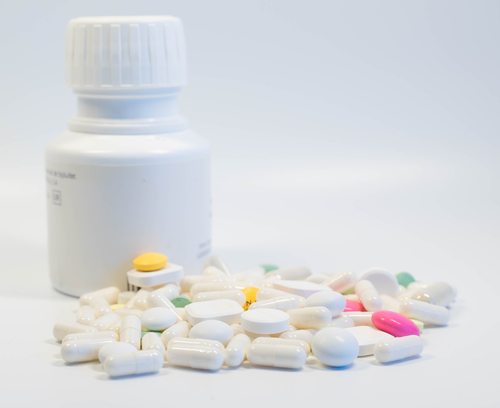Read the latest and greatest from our team
of incredible specialists.

Beach House Recovery Center » Blog » How is Suboxone Abused?
Despite growing alarm, the opiate epidemic in the U.S. continues apace, remaining a critical problem for Americans both rich and poor. Seeing as opiate-related deaths per capita have experienced sustained growth over the last decade, many lawmakers and families have concluded that those addicted to prescription painkillers and illicit opiates may require pharmacological assistance to get clean; i.e., using lesser drugs such as Suboxone to relieve the symptoms of stronger opiates.
While Suboxone has proven to be a useful tool for mitigating the severity of a painkiller or heroin addiction, it can be addictive and abused in its own right. Unfortunately, a significant minority of users have simply traded one addiction for a lesser version. Below, our drug detox experts at Beach House Recovery will discuss how suboxone is abused and the potential grave results of that abuse.

For thousands of years, humans have used opiates in one form or another to treat pain.
All of the opiates listed above were intended to be used as analgesics for dealing with moderate to severe pain. Unfortunately, they were too good at their job, and their chemical interaction with the brain swept up many into a pattern of abuse, dependence, and drug addiction.
To discuss Suboxone abuse, you must first understand opiate addiction. The body naturally produces opiates as a means of chemically rewarding and reinforcing life-saving behaviors such as eating, exercising, drinking, spending time in the sun, and procreating. When such activity occurs, natural opiates crack open a valve that sends a spurt of endorphins and dopamine to the pleasure center of the brain, stimulating the reward locus, and creating a subconscious link to those behaviors and feelings of well-being.
All opiate-based narcotics work in a similar manner. They attach to natural mu-opioid receptors that are scattered throughout the:
Natural, semi-synthetic, and synthetic opiates trick the receptors into believing that they are naturally produced opiates. They couple with receptors and overstimulate them. As a result, the valve is thrown wide open and a rush of endorphins and dopamine flood and overwhelm the brain’s pleasure center, creating intense euphoric feelings and effectively masking most pain.
Over time, your body naturally adapts to whatever conditions you subject it to. The deluge of happy feelings rewires the brain, causing natural opiate production to fall off and creating a sense of urgency for the body to introduce an ever-larger amount of the stronger, foreign substance. If you heed your body’s yearnings and feed the beast, your tolerance and need to use only continues to grow. Within weeks, a person can find themselves addicted to the substance, left experiencing painful withdrawal symptoms if they are unable to maintain their habit.
Opiate withdrawals can be harrowing and in cases of severe addiction, deadly. As a result, one of the methods doctors suggest for safely detoxing from opiates is a taper. This involves taking a little bit less of the substance each day, instead of suddenly stopping altogether. If done successfully, withdrawals might feel like getting hit by a bike instead of getting plowed over by a Brinks truck—both still hurt, but one far more.
The problem, however, lies in the fact that even a slow and measured weaning process can lead to severe withdrawals. So then, how does Suboxone work exactly? Suboxone, a partial opiate agonist mixture of naloxone and buprenorphine, was introduced to the market as a solution for this problem, a lubricant of sorts meant to smooth the process. To understand Suboxone as a whole, you first have to review the two drugs that combine to form it, Naloxone and Buprenorphine.
Naloxone is an opiate antagonist that is regularly used in cases of overdoses. It thwarts opiates from attaching to receptors. Within minutes of taking a Naloxone-based inhalant or shot, it shocks the system and immediately works to counteract the effects of opiates. This generally leads to rapid onset of withdrawal symptoms, including:
Buprenorphine is a partial opiate agonist that has a ceiling effect, in that, increased doses do not have a multiplier effect. This results in the following:
Consequently, buprenorphine can be used to block opiate effects, stave off withdrawal symptoms and cravings, and make detox relatively easier to manage. When taken properly, it does not cause euphoria, but in larger doses, it can be abused.
There are a variety of short-term and long-term effects of Suboxone abuse, which includes:
Although Suboxone is a useful tool for fighting opiate addiction and withdrawals, the fact that it’s a partial opiate leads a select minority of users to use it, abuse it, and wind up addicted. Left untreated, Suboxone addiction can have the same long-term health effects and life consequences as any other opiate.
When it was first created, doctors believed that Suboxone couldn’t and wouldn’t ever be abused. The ceiling effect meant that the drug could only give a specific amount of opiate action, and the built-in counter, Naloxone, was added to prevent abuse by bringing about withdrawal symptoms. However, people soon discovered that if the drug was crushed or taken in large doses, the mechanisms created to prevent misuse stopped being as effective.
To attain a high, opiate addicts soon began to abuse Suboxone in the following ways:
Now, many doctors nationwide have stopped giving out Suboxone due to their concern that patients need a better method of handling their substance abuse than simply giving them another pill. There is a growing consensus that if Suboxone is administered, it must be part of a treatment plan, which includes addiction monitoring as well as mental health counseling.
The New York Times reported in 2011 that there was a nationwide Suboxone problem in the prison system. According to Vermont Corrections Commissioner, Andrew Pallito, “Suboxone is the most common form of an illegal drug seized as contraband within the state’s correctional facilities.”
Suboxone abuse can result in a whole host of life-altering consequences, including:
Although withdrawal symptoms from suboxone are typically not as powerful as those resulting from stronger opiates, they can still be quite unpleasant. Symptoms include:
If you or a loved one has been prescribed Suboxone, it is essential that you learn to recognize the signs of addiction. By remaining wary of certain behaviors, you can prevent misuse from turning to full-blown abuse. Signs of abuse include:
A person abusing Suboxone may already be struggling with opiate addiction. Most Suboxone addicts were merely trying to get clean from a stronger drug and sadly reverted to old habits and poor decision making. While it may seem like a significant slide backward, take heart in the fact that Suboxone abuse and addiction can be treated.
If you have a loved one who is abusing Suboxone, it is critical that you step in and prevent them from sinking further into addiction. An intervention may be a necessary step in helping them see how far they’ve fallen. In reaching this point, you may have already had to stage an intervention for other opiates. If so, these are the steps to follow:
Addiction Intervention Services can provide the professional guidance needed to ensure a successful and compassionate intervention, helping you navigate the challenges of getting your loved one the help they need.
If you can convince your loved one to get help, they will need to consult with a doctor for a medical and psychological evaluation. At this consultation, the doctor will conduct tests and interviews to see the severity of the abuse and to gauge whether there are underlying mental health issues that were previously undiagnosed. Once this rigorous examination is finished, the doctor will likely suggest that your loved one needs to detox at either an inpatient or outpatient rehab facility.
Beach House Recovery is one such inpatient treatment center that provides Suboxone users with medical supervision, staff support, and a safe, drug-free recovery haven. Treating this addiction will involve several steps, including:
Suboxone abuse is a serious issue that requires addressing. If you have been prescribed it in order to aid you in your fight with opiate addiction, you must treat the drug with respect and only take it as prescribed. Be sure to consult with your doctor and thoroughly review the prescribed dosage and possible consequences of misuse. Suboxone can be a useful tool in your arsenal, but if you are not wary, you can easily fall into a pattern of abuse.
To learn more about your treatment program options, please call our Florida drug rehab today.
Sources:
Whether you’re researching for yourself or a loved one, Beach House can help. We understand that this is a serious time in your life and that the treatment center you choose matters. We want you to feel comfortable and empowered to make the right decision for yourself, a friend, or a family member. This is why a counselor is waiting and available to answer your questions and help put your mind at ease regarding the next steps. Many of the staff at Beach House have walked in your shoes. If you feel you’re ready or want more information about how to help a loved one, we can help today. You can also learn why we are voted the #1 rehab for addiction treatment in Florida.
We accept most major insurance plans and can verify your benefits quickly and confidentially.
We’re committed to helping you access the care you need, our admissions counselors can guide you through your coverage options and available resources.





"*" indicates required fields